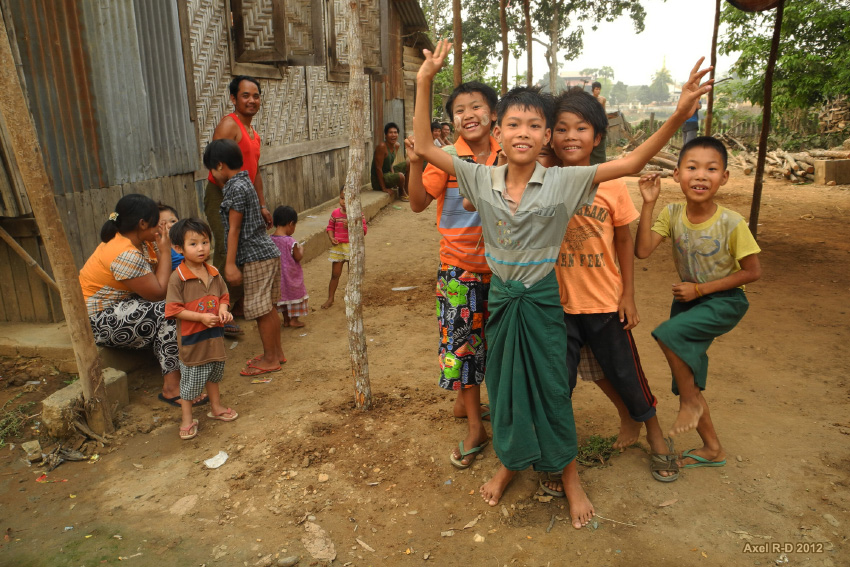Photo of children playing in the outskirts of Katha, Myanmar, by Axel Drainville via Flickr.
Second Sunday of Lent
Sister Mary Grenough, MM (1933-2021)
March 16, 2025
Gn 15:5-12, 17-18 | Phil 3:17—4:1 | Lk 9:28b-36
This reflection was published as part of the Lenten Reflection Guide: A Jubilee of Hope.
In Myanmar, it is difficult for people to count on a steady income, land, even food or education. When their families, clan or communities cannot meet their basic needs, they rely on their faith in God and their deeply ingrained religious rituals (some involving animal sacrifice) that come from the Buddhist and Christian traditions that surround them.
One thing that is true is that faith is essential for the people’s sanity and survival.
God’s promise to the people through Abraham about 16 centuries before the birth of Christ was clear. Abraham would have many descendants and inherit land. But with this promise came God’s covenant—as humans we must follow God’s way. But how do we know God’s way in our confusing world filled with situations of poverty, violence, war, greed?
On this second Sunday of Lent, Psalm 27 reminds us: “the Lord is my light and my salvation.” And Paul’s message from prison reminds the new Christians of the first century that we must “stand firm in the Lord in this way…” And that way involves following Christ, whose “way” led to his crucifixion.
Having lived among us, Jesus knows that we humans need reassurances at times, and James and John are encouraged and enthusiastic when they witness the vision of Jesus in full radiance with Moses and Elijah.
As the gospel of Luke unfolds, however, James and John awake to the fact that to really live the life of Jesus in our culture and world will surely bring suffering – as it did for Jesus.
If we try to live “as Jesus did” we discover God’s Spirit in our everyday lives in many ways. I was part of a group that started a small support program in a parish for people living with HIV and AIDS in Myanmar. Ten people came by special invitation and were very wary when they met each other. Some had known each other in their parish, but didn’t know they were HIV positive.
The group struggled to accept each other and themselves, and they learned to be more open with each other. They learned about each other’s experiences with HIV and AIDS, their feelings about being rejected and ostracized, and not being able to support themselves, get medicines or even basic food. In the meantime they also had the opportunity to learn more about HIV and AIDS, and meet other organized groups.
At Christmas time, this group (who named themselves “Guiding Star”) visited our house to sing Christmas carols for us. The group grew to about 30 people, young and old, men and women; they openly displayed their red AIDS ribbons and became strong in their resolve to educate others and to support one another. They were so alive – with obvious new life.
Yes, each of them had suffered and continued to suffer. But they had discovered a meaning for their lives and were learning to help each other. Their faith traditions included Catholic, Baptist, Buddhist, Muslim, and animist. Among them were Burmese and other various ethnic groups. They achieved a unity that the rest of the country still works toward. They all bonded over their painful experiences facilitated by compassion and friendship which opened them to new life.
Jesus is transfigured among all of us in many ways. Day by day as we try to live for others as Jesus did, we understand a bit more fully the meaning of Jesus’s life, death and resurrection.

